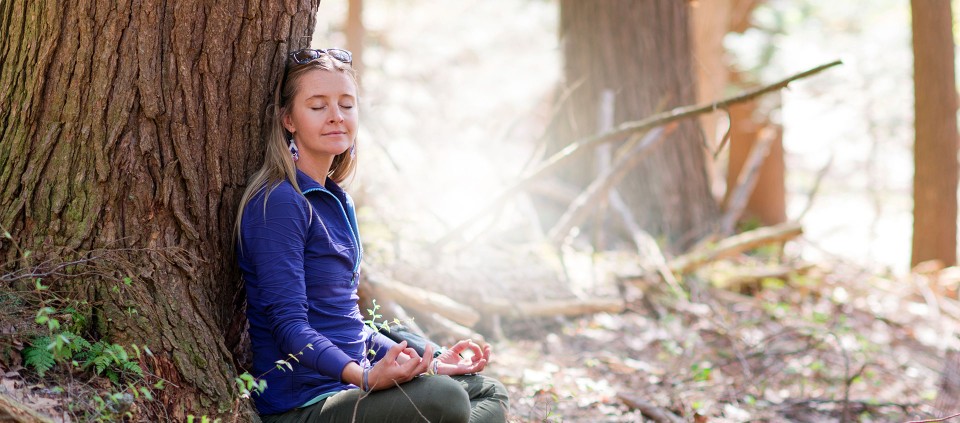4 Tips for Transforming Your Kripalu Trip into a Mindful Outdoor Experience

Heading to Kripalu? With a few simple practices, you can deepen your experience and make your trip not only a fun getaway, but also an opportunity to connect with nature and with yourself—as well as any companions you might have on the journey.
Breathe with the land. On your way to your Kripalu and when you arrive, pause and notice the scents and the quality of the air around you. Slow down your breathing and feel the way the breath connects you with your environment. Invite a sense of gratitude for the gifts you are receiving from the earth right now. Come back to this practice throughout your trip.
Acknowledge the First People. Wherever you go, whichever lands you explore and pitch a tent on, indigenous people have a history there. I have made it a practice to educate myself about the original inhabitants of the lands I explore or guide on, acknowledging them by name and learning about their history. Whenever possible, I seek historical accounts as told by indigenous people, as opposed to narratives gleaned from colonial sources. First Peoples are still here, and they have a lot to say about the land and their own story. Being mindful and aware of that history is the right thing to do, and a powerful education as you prepare for your trip. Kripalu sits on the Stockbridge-Munsee land.
Ramble on. Over the years, my hiking pace has evolved into more of a saunter. I find that walking more slowly and taking in the sights, sounds, smells, tastes, and sensations of the land is fascinating and relaxing. Do some forest bathing during your camping trip, meaning walking mindfully and opening your senses to the earth. You might even want to try “hiking with your hands,” as my friend and fellow teacher Mark Roule calls it—reaching out to feel the texture of bark or the quality of cool stones or mosses. Allow your awareness to be filled with the vibrant messages of the living earth.
Be a witness. While you’re out exploring, seek a secluded spot that feels inviting and safe—a tree, a rock, or a hillside with a good view. Allow yourself 15 to 30 minutes to settle into this spot and observe what unfolds before you. Practice being rather than doing. Notice how the wind moves the grasses, sense the rustling of the birds, observe the changing quality of light moving on the earth. You may be surprised by what you see.
Do a fire meditation. Fire has been revered since ancient times as a source of light, warmth, and companionship. Before Netflix, our ancestors ended most days gazing into a fire. According to Ayurveda, we carry fire within us, in our digestion and in our power to discern and assimilate knowledge. When we gaze at a flickering flame, our brain begins to shift out of beta brainwave state, associated with thinking and alertness, into alpha brainwave state, which corresponds to a relaxed and creative state of mind. A campfire offers an easy way into meditation, and also helps to align us with the natural cycles of light and dark—promoting deep rest once we slip into our sleeping bags.
Learn more about the Kripalu School of Mindful Outdoor Leadership.
Micah Mortali is lead Kripalu faculty, the Founder of the Kripalu School of Mindful Outdoor Leadership and author of Rewilding.
Full Bio and Programs